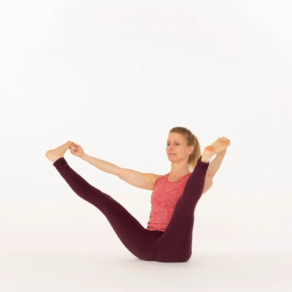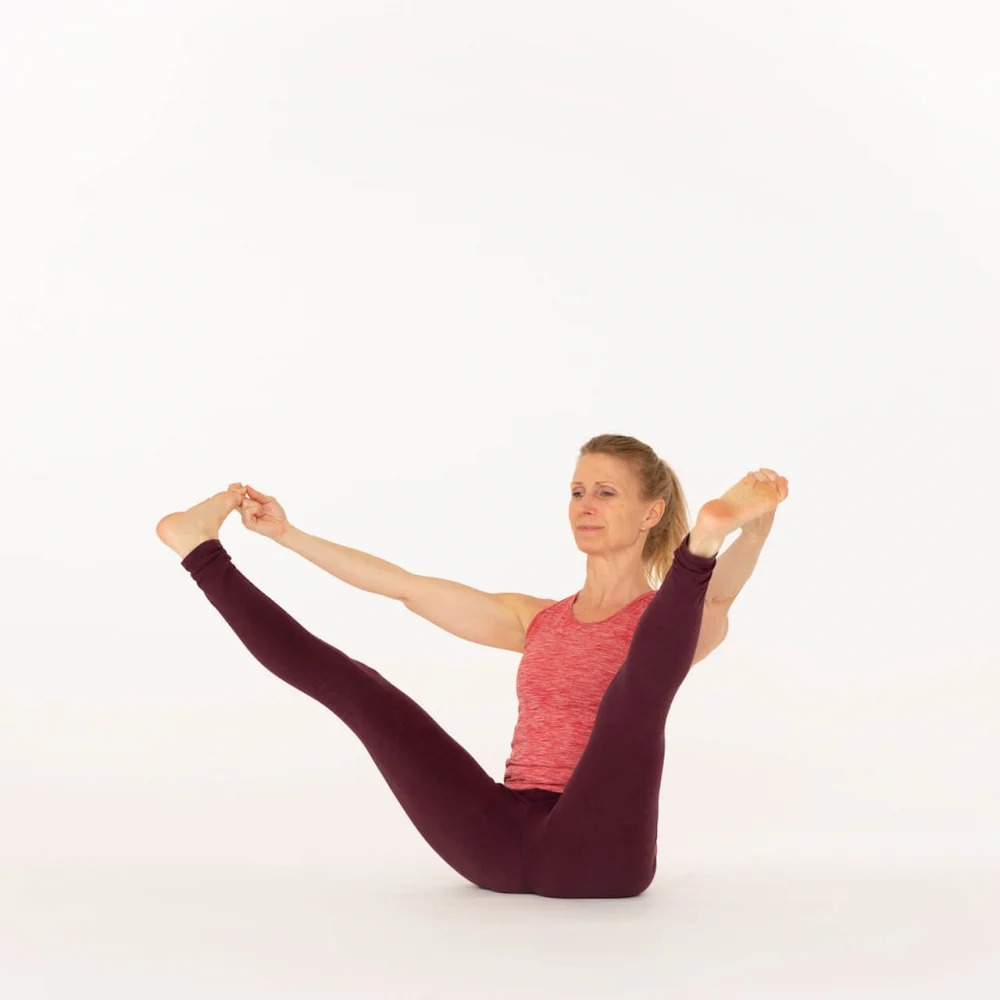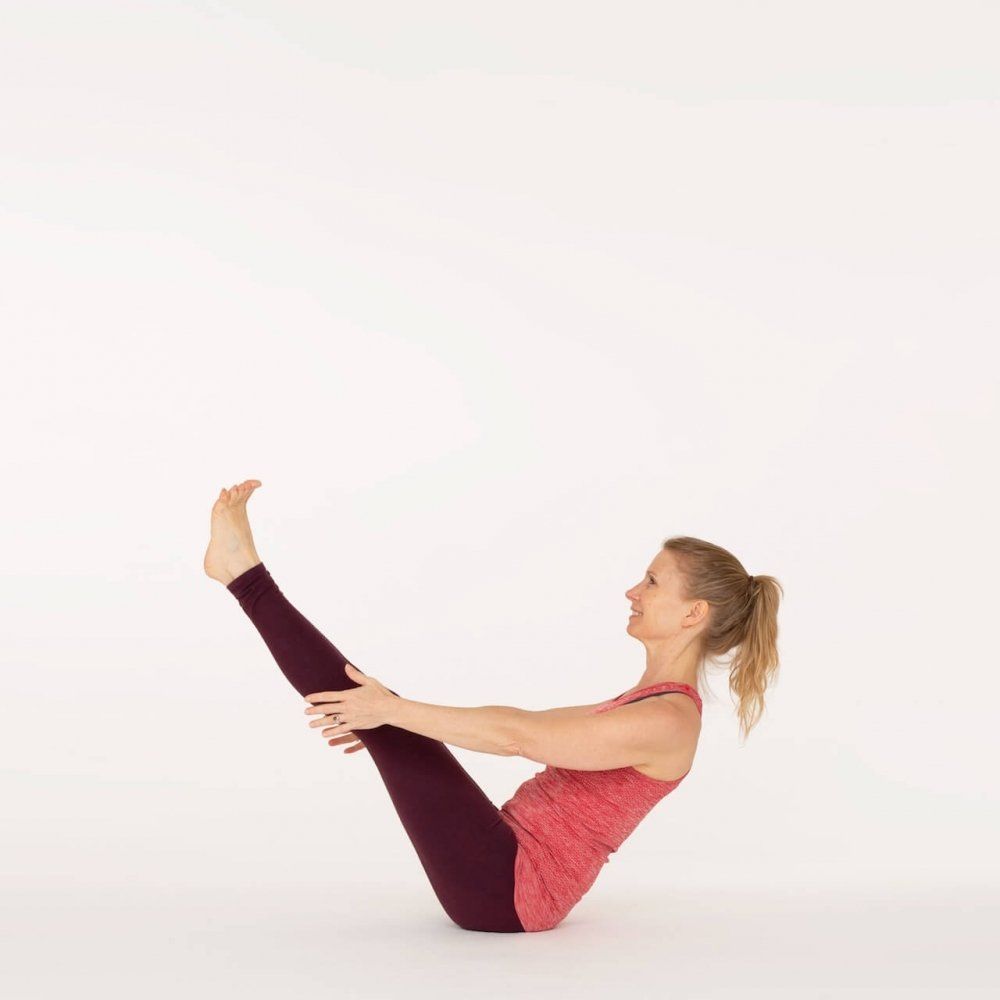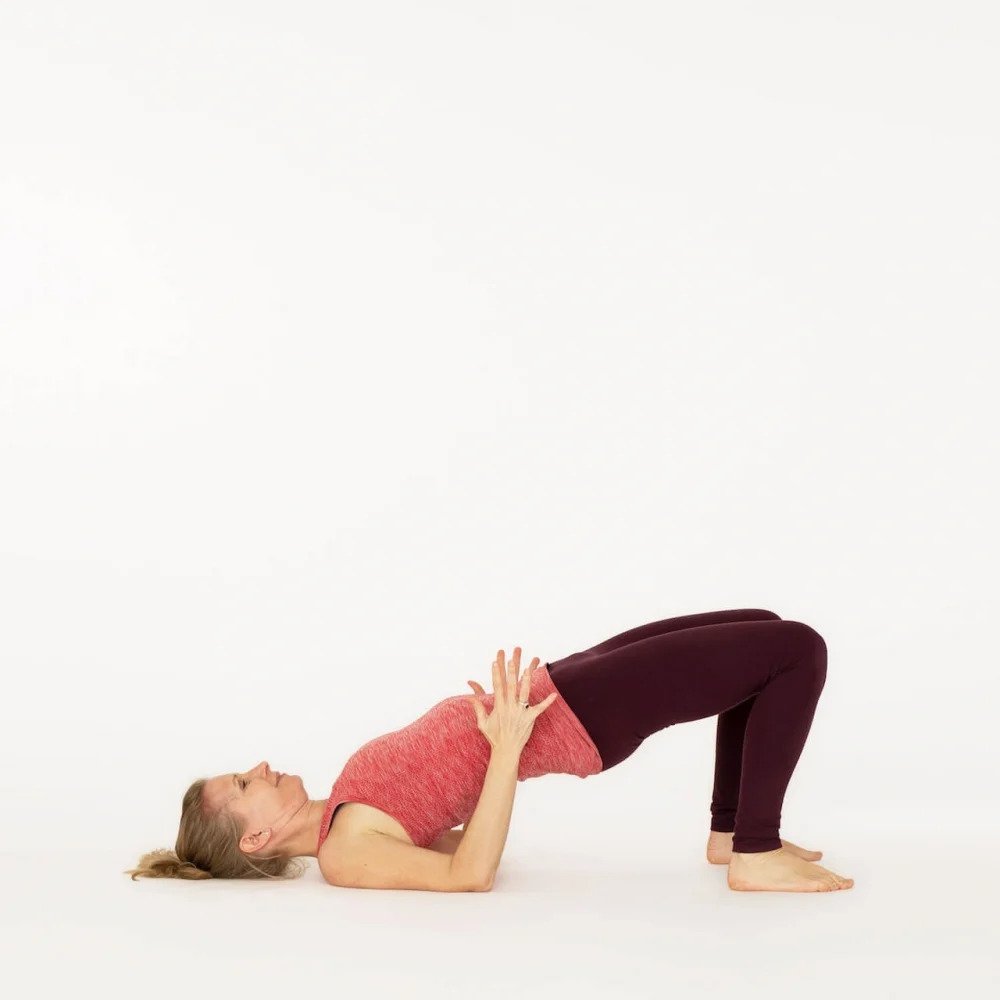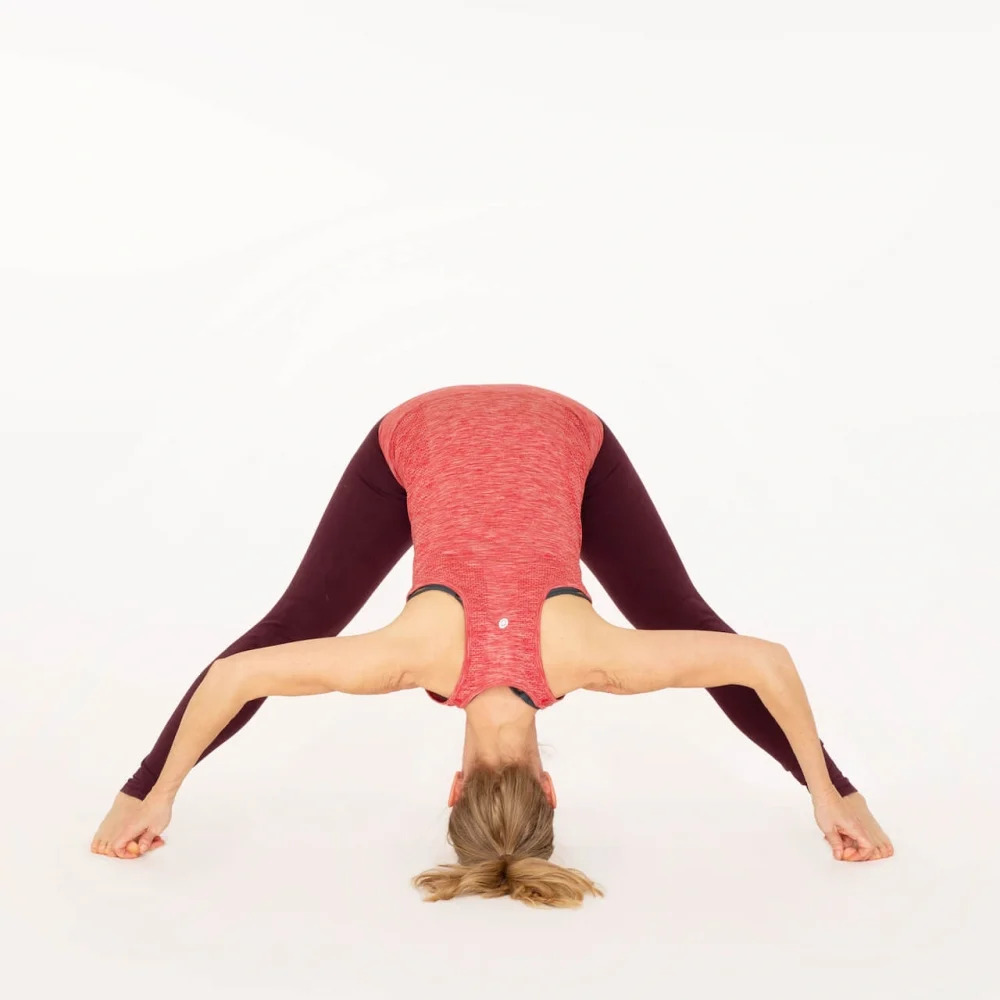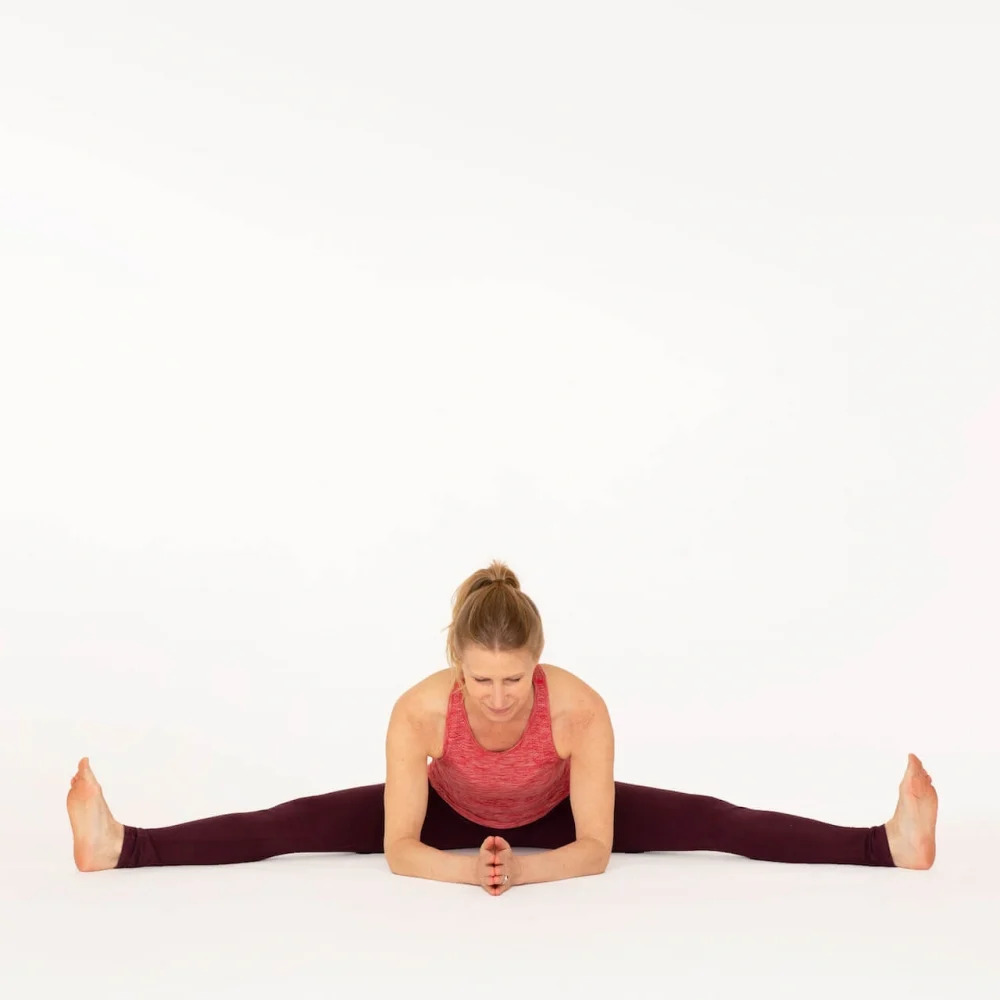Step by step
- Start by sitting in Baddha Konasana / Bound Angle pose.
- Hook your first two fingers around each of your big toes.
- Exhale and tilt back, balancing on your sit bones.
- Inhale and straighten your legs.
- Keep your legs active and the kneecaps pulled up.
- Keep your chest lifted and open, shoulders down and your spine extended.
Beginners’ tips
- Keep your knees bent or loop a strap or belt around each foot if you can’t straighten your legs while holding onto your feet,
- To help find your balance with straightened legs and straight spine, position a blanket roll just behind your pelvis, this will help support your lower back.
Benefits
- Improves balance.
- Strengthens and tones the abs, spine and legs.
- Stimulates the internal organs.
Watch out for
- Avoid collapsing in the lower back. Bend your knees or use straps around your feet if this is happening.
- Make sure you have enough space around you in case you lose your balance and tip forwards or backwards.
- Take care not to overstretch your hamstrings.
Variations
- To deepen this pose bring the legs to each other. Then to move towards Urdhva Mukha Paschimottanasana, bend the arms, bringing the elbows out to the side. Bring the chest and legs towards each other while still balancing on your sit bones.
- You can also come into this pose from Plough Pose / Halasana. Reach your arms back to grasp your big toes. Inhale and roll up. Your chin is tucked as you roll, leading with your navel. This version is great for really integrating your core strength and fine-tuning your balance.
- Alternatively in the Ashtanga Vinyasa Primary Series, you come into the pose from Upavishta Konasana. Pushing the floor away with your feet and legs while lifting the torso and head, eventually coming to a point of balance on the sitting bones.

